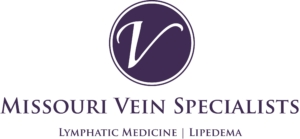Facts About Vein Disease
Who can get vein disease?
Just about anyone and heredity plays the biggest role. 10% of men and 50% of women totaling over 80 million Americans are affected. As might be expected, any condition that puts strain on flow of blood from the legs toward the heart can aggravate the condition. This includes, but is not limited to pregnancy, standing for long periods, obesity, and extended sitting. For each individual, it is important to accurately identify the cause of their particular situation.
What is the difference between EVLT and VNUS closure of the saphenous vein?
VNUS closure arrived about two years before the first vein laser. Some insurance companies approve both technologies, some only VNUS (as of now). The VNUS device is more complicated and considerably more expensive to use. Both technologies are FDA approved. We have found that the laser is almost 100% successful in closing average-sized saphenous veins, and it is definitely more effective than the VNUS device for closing large saphenous veins.
Isn’t the greater saphenous vein the one used in heart bypass surgery? What if I need it for that?
It is true that many times the greater saphenous vein is used in cardiac surgery; however, if the vein is diseased, as is the case with varicose veins and chronic venous insufficiency, it is typically unusable for heart surgery. In addition, there are other possible sources of veins or arteries in the body to use for that purpose.
Is destroying the saphenous vein harmful?
No. Generally the saphenous vein is only destroyed when it is thick and thrombosed. The vein in this state is almost useless and non- functioning and there is no harm in removing it. However, a normally functioning saphenous vein with no leaky valves should not be treated. A normal saphenous vein should always be preserved because it may be required in the future for open heart surgery.
After the saphenous vein is occluded, or closed, can it grow back?
In theory, blood flow can resume. However, the probability of the saphenous vein reopening appears to be no more than 10% out to 2 years. One published report found that at 2 years 90% of Closure treated veins were invisible to ultrasound, suggesting permanent obliteration.
Is there any restriction in activities following saphenous vein ablation?
We request that patients limit activities that require contraction of the abdominal muscles because that causes an increase in venous pressure in the legs for 7-10 days. Such activities include jogging, heavy lifting, sit-ups, crunches and excessive stair climbing. Since we want the treated vein to close, we want to subject it to as little pressure as possible till it has a chance to heal. Walking is encouraged. You’ll be back to your more strenuous activities in ten days to two weeks.
Will my insurance or Medicare pay for saphenous vein ablation or ultrasound-guided sclerotherapy?
In most cases, yes. Also, remember, there are no separate hospital or anesthesiologist charges to pay because these procedures are done in our office. One of our services is to obtain pre-certification from your insurance company. For treatment of spider veins usually no, because they consider sclerotherapy to be a cosmetic procedure (ultrasound-guided sclerotherapy can often be an exception to this rule).
What can I do after ligation treatment?
No limitations are placed on normal activities after high ligation. The incision needs to be kept dry until the stitches are removed, which is usually three days after your surgery. During this time you will need to shower. Bruising around the incision line is normal. No pain medications are usually required or prescribed so please have an over-the-counter analgesic (such as Tylenol or Motrin) available at home to be used if needed.
Do you need to save your saphenous vein in case you need bypass surgery?
Patients who have multiple risk factors for heart disease (such as male gender, smoking, high blood lipids, hypertension, a sedentary lifestyle or a strong family history of the disease) may need to preserve one of the saphenous veins, assuming that it is not already too abnormal. By combining ligation (tying the vein at the source of abnormal flow) and sclerotherapy, varicose veins can be removed while the saphenous vein is preserved.

